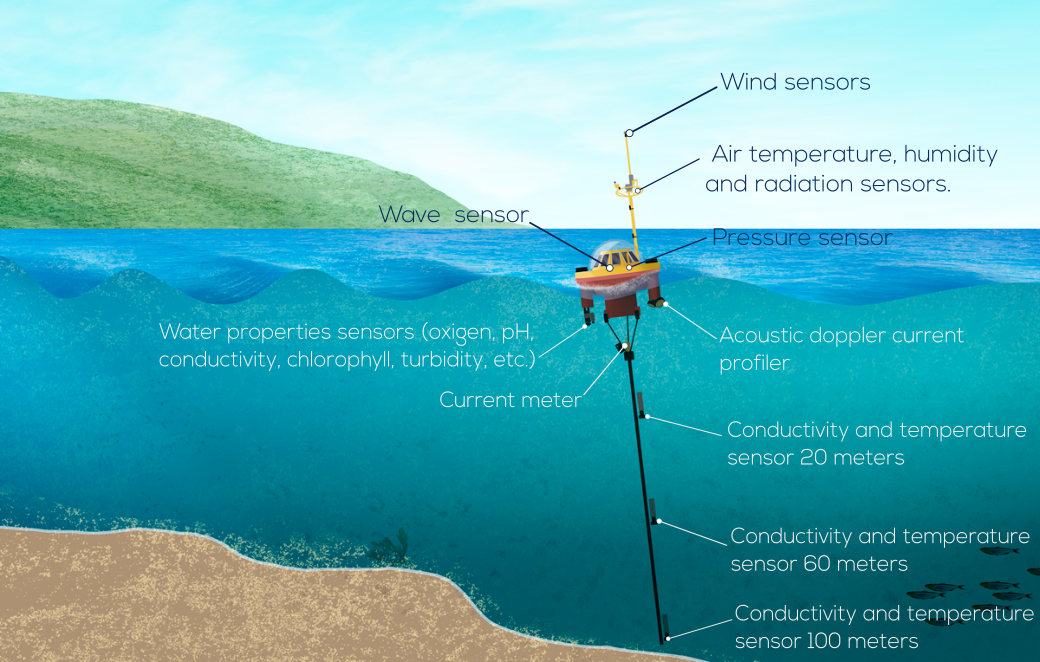SOCIB FIXED STATIONS
This is a real-time monitoring system for obtaining reliable data relating to different oceanographic parameters (such as waves, currents, temperature and salinity) and also meteorological parameters (atmospheric pressure, wind speed or air temperature) through a network of infrastructures made up of coastal stations, oceanographic buoys, sea level stations and weather stations.
INNOVATION FOR IMPROVED FORECASTING
This network of fixed infrastructures with cutting-edge technology (based on innovation, control, constant maintenance and improvement thanks to the department of Engineering and Technological Development at SOCIB) represents a commitment to operational oceanography and constant improvement of the oceanographic forecasting systems.
THE MAIN BENEFITS OF THIS MONITORING:
Improved observation and forecasting of oceanic conditions (currents, waves...) which is crucial for improving maritime activities, both recreational and economic.
It helps to monitor water quality, to detect the acidification of sea water and aids the analysis of climate change.
















